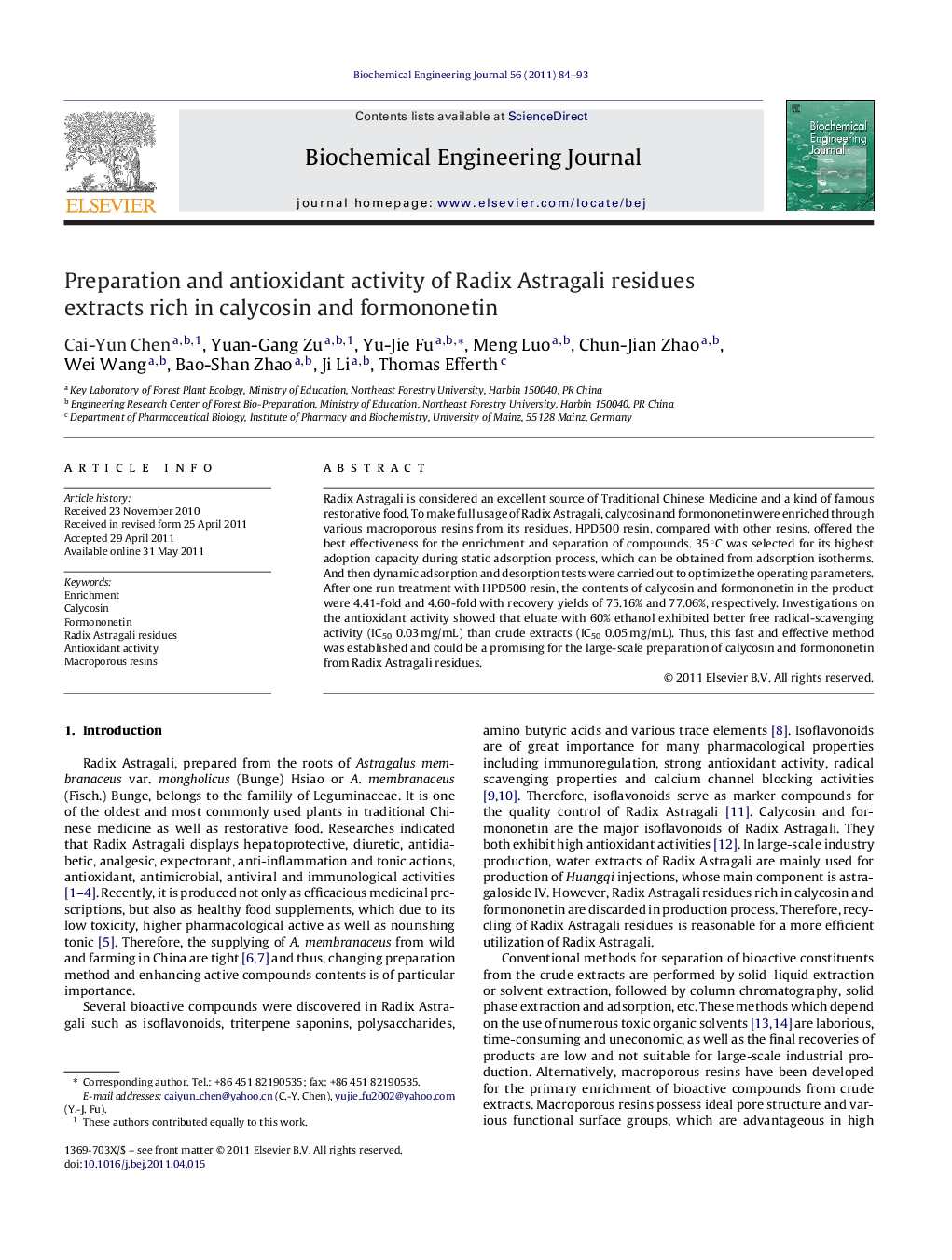| کد مقاله | کد نشریه | سال انتشار | مقاله انگلیسی | نسخه تمام متن |
|---|---|---|---|---|
| 3772 | 187 | 2011 | 10 صفحه PDF | دانلود رایگان |

Radix Astragali is considered an excellent source of Traditional Chinese Medicine and a kind of famous restorative food. To make full usage of Radix Astragali, calycosin and formononetin were enriched through various macroporous resins from its residues, HPD500 resin, compared with other resins, offered the best effectiveness for the enrichment and separation of compounds. 35 °C was selected for its highest adoption capacity during static adsorption process, which can be obtained from adsorption isotherms. And then dynamic adsorption and desorption tests were carried out to optimize the operating parameters. After one run treatment with HPD500 resin, the contents of calycosin and formononetin in the product were 4.41-fold and 4.60-fold with recovery yields of 75.16% and 77.06%, respectively. Investigations on the antioxidant activity showed that eluate with 60% ethanol exhibited better free radical-scavenging activity (IC50 0.03 mg/mL) than crude extracts (IC50 0.05 mg/mL). Thus, this fast and effective method was established and could be a promising for the large-scale preparation of calycosin and formononetin from Radix Astragali residues.
► This is the first report on simultaneous enrichment and separation of calycosin and formononetin with excellent free radical-scavenging activity from extracts of Radix Astragali residues by macroporous resin.
► Macroporous resins possess ideal pore structure and various functional surface groups, which are advantageous in high adsorption properties, simple procedure, high efficiency, low cost, little environmental pollution and easy regeneration.
► Nowadays, the wild natural resources of Astragalus membranaceus are diminishing and the bulk of the commercial supply is mainly from farming sources in China. Therefore, recycling of Radix Astragali residues is reasonable for a more efficient utilization of Radix Astragali resources.
Journal: Biochemical Engineering Journal - Volume 56, Issues 1–2, 15 September 2011, Pages 84–93